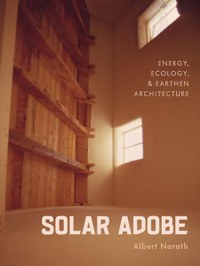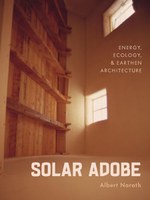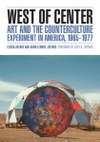Solar Adobe
Energy, Ecology, and Earthen Architecture
Albert Narath

Albert Narath charts the unique capacities of adobe construction against the backdrop of the global energy crisis of the 1970s, troubling simple distinctions between traditional and modern technologies, high design and vernacular architecture. Drawing insightful parallels between architecture, environmentalism, and movements for Indigenous sovereignty, Solar Adobe stresses the importance of considering the history of the built environment in conjunction with architecture’s larger impact on the natural world.
Solar Adobe helps us see that one of the projects of architectural modernism was to delegitimate Indigenous and customary practices in favor of a range of purported universal norms—it helps us recognize, in other words, that the seeming innovations of architecture in the twentieth century were also oppressions. As we collectively turn to these practices and materials again, Albert Narath’s narrative is both instructive and inspirational.
Daniel A. Barber, author of Modern Architecture and Climate: Design before Air Conditioning

Against the backdrop of a global energy crisis, a widespread movement embracing the use of raw earth materials for building construction emerged in the 1970s. Solar Adobe examines this new wave of architectural experimentation taking place in the United States, detailing how an ancient tradition became a point of convergence for issues of environmentalism, architecture, technology, and Indigenous resistance.
Utilized for centuries by the Pueblo people of the American Southwest and by Spanish colonialists, adobe construction received renewed interest as various groups contended with the troubled legacies of modern architecture and an increasingly urgent need for sustainable design practices. During this period of critical experimentation, design networks that included architects, historians, counterculture communities, government weapons laboratories, and Indigenous activists all looked to adobe as a means to address pressing environmental and political issues.
Albert Narath charts the unique capacities of adobe construction across a wide range of contexts, consistently troubling simple distinctions between traditional and modern technologies, high design and vernacular architecture. Drawing insightful parallels between architecture, environmentalism, and movements for Indigenous sovereignty, Solar Adobe stresses the importance of considering the history of the built environment in conjunction with architecture’s larger impact on the natural world.
$32.95 paper ISBN 978-1-5179-1407-3
$132.00 cloth ISBN 978-1-5179-1406-6
296 pages, 56 b&w photos, 6 x 8, March 2024

Albert Narath is associate professor of the history of the built environment at the University of California, Santa Cruz.

Solar Adobe helps us see that one of the projects of architectural modernism was to delegitimate Indigenous and customary practices in favor of a range of purported universal norms—it helps us recognize, in other words, that the seeming innovations of architecture in the twentieth century were also oppressions. As we collectively turn to these practices and materials again, Albert Narath’s narrative is both instructive and inspirational.
Daniel A. Barber, author of Modern Architecture and Climate: Design before Air Conditioning
When the Pueblo ancestors from Chaco, Mesa Verde, and Bandelier moved to the lowlands, a new technology—called adobe—emerged. In Solar Adobe, Albert Narath brings forth a forgotten era when modernization was trumped by a few visionaries who chose to ‘look backwards toward the future.’ They gave evidence that this ancestral technology is equal to high design and, perhaps, even more critical in a world now reeling from climate change and warming.
Theodore (Ted) Jojola, director, Indigenous Design + Planning Institute, The University of New Mexico











